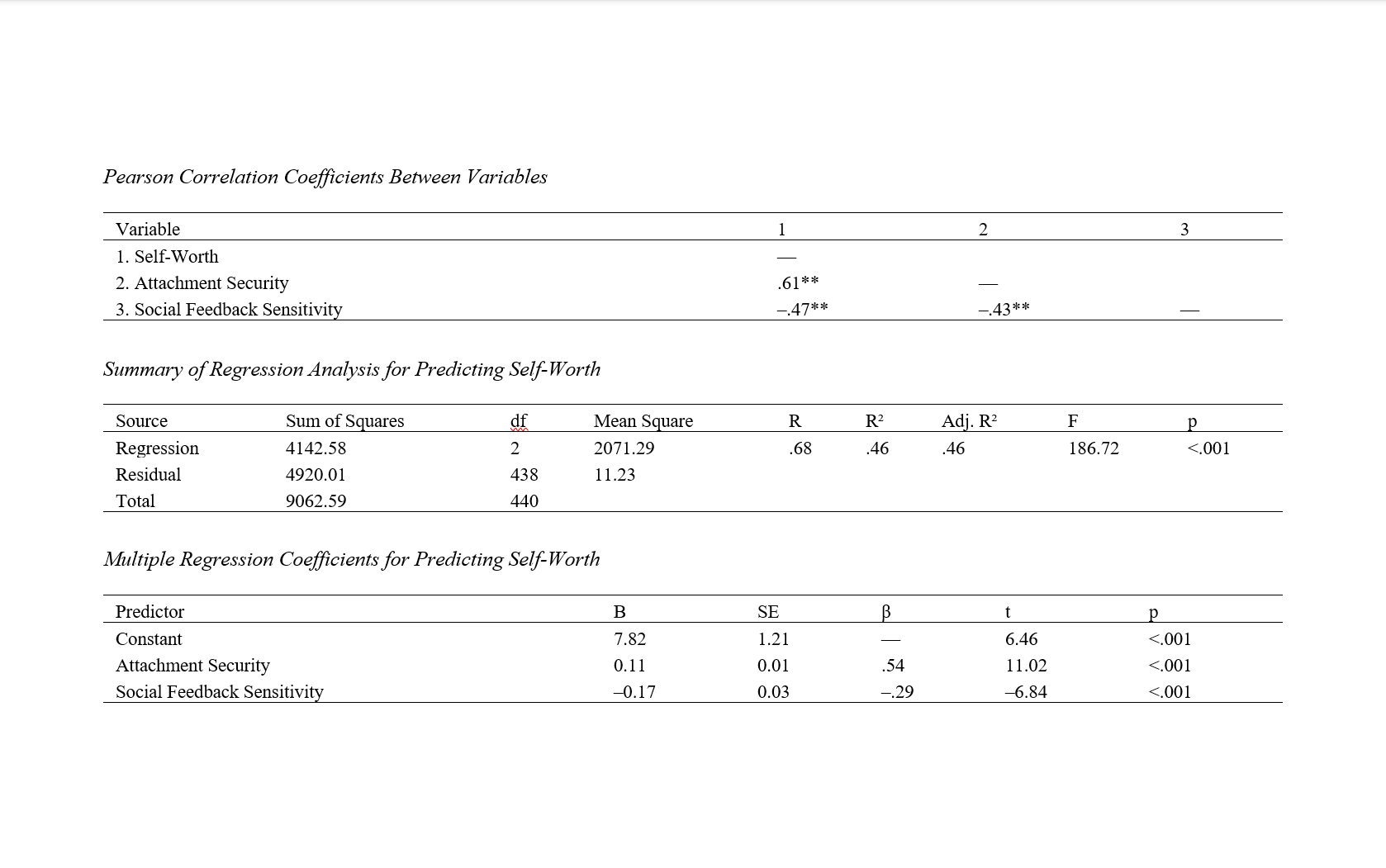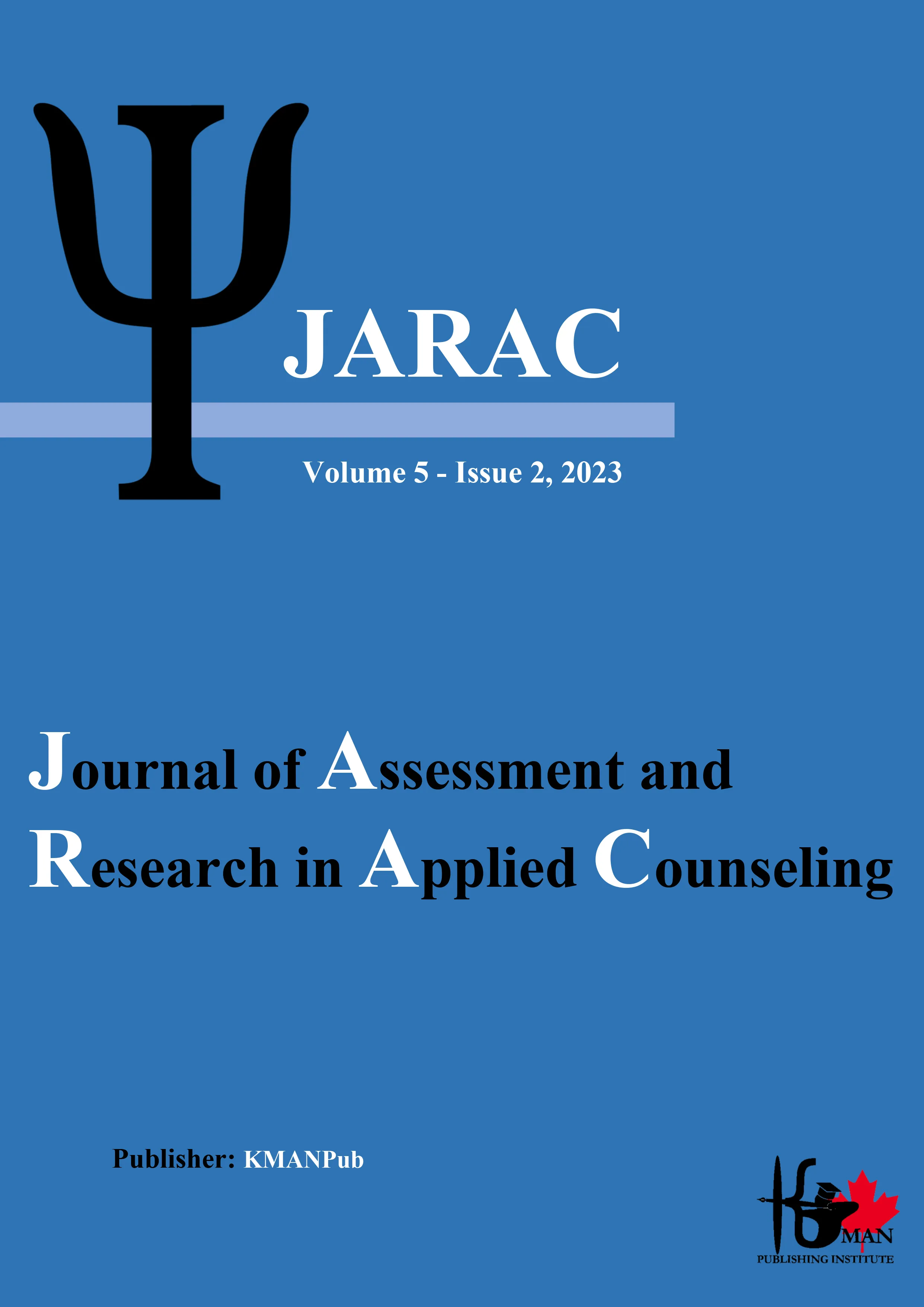Predicting Self-Worth from Attachment Security and Social Feedback Sensitivity
Keywords:
Self-worth, Attachment Security, Social Feedback, Sensitivity, University, StudentsAbstract
Objective: This study aimed to investigate the predictive roles of attachment security and social feedback sensitivity in determining self-worth among university students.
Methods and Materials: A correlational descriptive research design was used to examine the relationships between the variables. The sample consisted of 441 undergraduate students from various universities in Greece, selected based on the Krejcie and Morgan sample size determination table. Participants completed the Rosenberg Self-Esteem Scale (RSES) to assess self-worth, the Experiences in Close Relationships-Revised (ECR-R) to measure attachment security, and the Sensitivity to Social Feedback Scale (SSFS) to evaluate their responsiveness to social feedback. Data were analyzed using SPSS version 27. Pearson correlation coefficients were calculated to explore the bivariate associations between the variables, and multiple linear regression analysis was conducted to determine the predictive power of attachment security and social feedback sensitivity on self-worth.
Findings: The results revealed a significant positive correlation between attachment security and self-worth (r = .61, p < .01) and a significant negative correlation between social feedback sensitivity and self-worth (r = –.47, p < .01). Multiple regression analysis indicated that the model significantly predicted self-worth, F(2, 438) = 186.72, p < .001, with R² = .46. Both attachment security (β = .54, p < .001) and social feedback sensitivity (β = –.29, p < .001) emerged as significant predictors, together accounting for 46% of the variance in self-worth.
Conclusion: The findings highlight the crucial role of both early relational security and ongoing interpersonal feedback in shaping self-worth among young adults. Enhancing attachment security and reducing maladaptive sensitivity to social feedback may be effective pathways for promoting healthier self-concepts in emerging adulthood.
Downloads
References
Allen, J. P., Grande, L. A., Tan, J., & Loeb, E. L. (2017). Parent and Peer Predictors of Change in Attachment Security From Adolescence to Adulthood. Child development, 89(4), 1120-1132. https://doi.org/10.1111/cdev.12840
Barnum, E. L., & Perrone, K. M. (2017). Attachment, Self-Esteem and Subjective Well-Being Among Survivors of Childhood Sexual Trauma. Journal of Mental Health Counseling, 39(1), 39-55. https://doi.org/10.17744/mehc.39.1.04
Bhatia, A., Rana, S., & Gregor, M. A. (2023). The Relationship Between Parental Attachment and Career Aspirations in Indian Female Undergraduate Students. Journal of Career Assessment, 31(4), 631-647. https://doi.org/10.1177/10690727221129615
Chen, B. B. (2017). Parent–adolescent Attachment and Procrastination: The Mediating Role of Self-Worth. The Journal of Genetic Psychology, 178(4), 238-245. https://doi.org/10.1080/00221325.2017.1342593
Davarinejad, O., Ghasemi, A., Hall, S. S., Meyers, L. S., Shirzadifar, M., Shirzadi, M., Brand, S., & Shahi, H. (2020). Emotionally Stable, Extraverted, Conscientious, and Unambivalent: Iranian Women Successfully Navigating Divorce Adjustment. Journal of Family Issues, 42(9), 2181-2206. https://doi.org/10.1177/0192513x20968607
Deniz, M. E., & KurtuluŞ, H. Y. (2023). Self-Efficacy, Self-Love, and Fear of Compassion Mediate the Effect of Attachment Styles on Life Satisfaction: A Serial Mediation Analysis. Psychological Reports, 128(2), 457-482. https://doi.org/10.1177/00332941231156809
Dinero, R. E., Conger, R. D., Shaver, P. R., Widaman, K. F., & Larsen‐Rife, D. (2008). Influence of Family of Origin and Adult Romantic Partners on Romantic Attachment Security. Journal of Family Psychology, 22(4), 622-632. https://doi.org/10.1037/a0012506
Ferkany, M. (2009). Recognition, Attachment, and the Social Bases of Self‐Worth. The Southern Journal of Philosophy, 47(3), 263-283. https://doi.org/10.1111/j.2041-6962.2009.tb00094.x
Gu, R., Ao, X., Mo, L., & Zhang, D. (2020). Neural Correlates of Negative Expectancy and Impaired Social Feedback Processing in Social Anxiety. Social Cognitive and Affective Neuroscience, 15(3), 285-291. https://doi.org/10.1093/scan/nsaa038
Kenny, M. E., & Şirin, S. R. (2006). Parental Attachment, Self-Worth, and Depressive Symptoms Among Emerging Adults. Journal of Counseling & Development, 84(1), 61-71. https://doi.org/10.1002/j.1556-6678.2006.tb00380.x
KoÇAk, M. Ç., & Çelik, E. (2022). Investigation of the Relationship Between Resilience, Self-Compassion, and Attachment Styles in Interpersonal Relationships in Married Individuals. Bayburt Eğitim Fakültesi Dergisi, 17(36), 1426-1438. https://doi.org/10.35675/befdergi.1153406
Kujawa, A., Arfer, K. B., Klein, D. N., & Hajcak, G. (2014). Electrocortical Reactivity to Social Feedback in Youth: A Pilot Study of the Island Getaway Task. Developmental Cognitive Neuroscience, 10, 140-147. https://doi.org/10.1016/j.dcn.2014.08.008
Levi‐Belz, Y., & Lev‐Ari, L. (2019). Is There Anybody Out There? Attachment Style and Interpersonal Facilitators as Protective Factors Against Complicated Grief Among Suicide-Loss Survivors. The Journal of Nervous and Mental Disease, 207(3), 131-136. https://doi.org/10.1097/nmd.0000000000000940
Lim, B. H., Adams, L. A., & Lilly, M. M. (2012). Self-Worth as a Mediator Between Attachment and Posttraumatic Stress in Interpersonal Trauma. Journal of interpersonal violence, 27(10), 2039-2061. https://doi.org/10.1177/0886260511431440
Lockhart, G., Phillips, S., Bolland, A. C., Delgado, M. Y., Tietjen, J., & Bolland, J. M. (2017). Prospective Relations Among Low-Income African American Adolescents’ Maternal Attachment Security, Self-Worth, and Risk Behaviors. Frontiers in psychology, 8. https://doi.org/10.3389/fpsyg.2017.00033
Ludmer, J., Vernon, P. A., & Gardner, R. C. (2013). Attachment Style and the Stability of Self-Worth Following Life Events. Journal of Psychology Research, 3(8). https://doi.org/10.17265/2159-5542/2013.08.003
Maher, H., Sumathi, D., & Winston, C. N. (2015). Object of Desire or Object of Distress? Psychosocial Functioning Among Securely and Insecurely Attached Indian Young Adults. Psychoanalytic Psychology, 32(3), 432-450. https://doi.org/10.1037/a0038169
Mikulincer, M., Shaver, P. R., Bar-On, N., & Sahdra, B. K. (2014). Security Enhancement, Self-Esteem Threat, and Mental Depletion Affect Provision of a Safe Haven and Secure Base to a Romantic Partner. Journal of Social and Personal Relationships, 31(5), 630-650. https://doi.org/10.1177/0265407514525887
Nepon, T., Flett, G. L., Hewitt, P. L., & Molnar, D. S. (2011). Perfectionism, negative social feedback, and interpersonal rumination in depression and social anxiety. Canadian Journal of Behavioural Science / Revue canadienne des sciences du comportement, 43(4), 297-308. https://doi.org/10.1037/a0025032
Neustadt, E., Chamorro‐Premuzic, T., & Furnham, A. (2011). Attachment at Work and Performance. Attachment & Human Development, 13(5), 471-488. https://doi.org/10.1080/14616734.2011.602254
Park, L. E. (2010). Responses to Self-Threat: Linking Self and Relational Constructs With Approach and Avoidance Motivation. Social and Personality Psychology Compass, 4(3), 201-221. https://doi.org/10.1111/j.1751-9004.2009.00247.x
Peterson, J. L. (2014). Explicit Thoughts of Security Activate Implicit Self‐doubt in Anxiously Attached Participants. Personal Relationships, 21(2), 206-224. https://doi.org/10.1111/pere.12027
Pinquart, M. (2022). Associations of Self-Esteem With Attachment to Parents: A Meta-Analysis. Psychological Reports, 126(5), 2101-2118. https://doi.org/10.1177/00332941221079732
Pinto, A., Veríssimo, M., Gatinho, A., Santos, A. J., & Vaughn, B. E. (2015). Direct and Indirect Relations Between Parent–child Attachments, Peer Acceptance, and Self-Esteem for Preschool Children. Attachment & Human Development, 17(6), 586-598. https://doi.org/10.1080/14616734.2015.1093009
Quintana, J. C. M., Ramos, P. F. A., & Almeida, P. M. (2023). The Influence of Perceived Security in Childhood on Adult Self-Concept: The Mediating Role of Resilience and Self-Esteem. Healthcare, 11(17), 2435. https://doi.org/10.3390/healthcare11172435
Rappaport, B. I., Kujawa, A., Arfer, K. B., Pegg, S., Kelly, D., Jackson, J. J., Luby, J. L., & Barch, D. M. (2023). Behavioral and Psychiatric Correlates of Brain Responses to Social Feedback. Psychophysiology, 61(1). https://doi.org/10.1111/psyp.14413
Walters, J., Farley, J. P., Deater‐Deckard, K., & Kim‐Spoon, J. (2019). Predictors of Sibling Victimization and Associations With Self-Perception and Relationship Attachment in Adolescence. The Journal of Early Adolescence, 40(3), 305-327. https://doi.org/10.1177/0272431619837382
Willis, L., & Yates, T. M. (2023). Childhood Emotional Abuse, Caregiver Attachments, &Amp;amp; Self- Worth: Mechanisms in the Cycle of Violence. Uc Riverside Undergraduate Research Journal Submit, 17(1). https://doi.org/10.5070/rj517162179

Downloads
Additional Files
Published
Submitted
Revised
Accepted
Issue
Section
License

This work is licensed under a Creative Commons Attribution-NonCommercial 4.0 International License.














